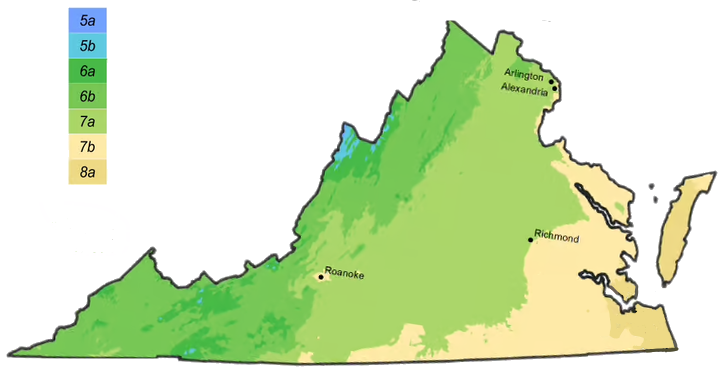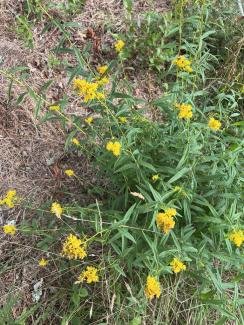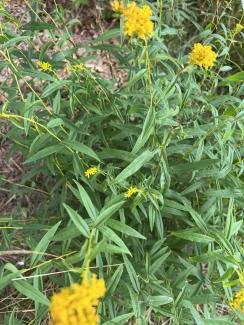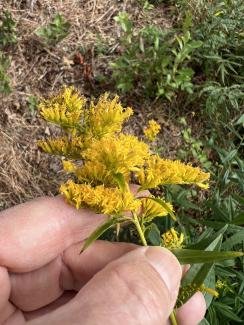Synonym(s)
Common Name
Sweet goldenrod
Anise-scented goldenrod
Plant Form
Herbs
Duration
Perennial
Max Height (ft)
5.0
Growth Rate
Medium
Region
Coastal
Piedmont
Mountain

Additional Info
Habitat: Dry, often sandy open forests, woodlands, sandstone barrens, clearings, old fields, and roadsides; strictly in acidic, nutrient-poor soils.
Wildlife Value: Supports Wavy-lined Emerald larvae. Attractive to bees and butterflies. Members of the genus Solidago support many specialized bee species. Songbirds eat the seeds. Plant NOVA Natives lists this species as particularly popular with the non-native honeybees
Notes: Less likely to spread than other goldenrods. Goldenrod is sometimes blamed for the pollen that causes hay fever, however, that pollen and its irritating symptoms are actually caused by ragweed (Ambrosia species), whose pollen is airborne when goldenrod is in flower.
Flower Color
Gold/Yellow
Flower Prominence
Conspicuous
Bloom Time
Early Summer
Late Summer
Fall
Bloom Month
July
August
September
October
Light Requirements
Full sun
Partial sun
Moisture Requirements
Moist
Soil Texture
Clay
Loamy
Sandy
Low Maintenance
Yes
Good Choice for Public Spaces
Yes
Deer Resitant
Yes
Seed or Fruit eaten by wildlife?
Yes
Pollinators
Bees
Butterfiles
Top 30 for Butterfly and Moth Caterpillars?
Yes
Number of Lepidotera Species Genus Supports
115
Top 30 for Pollen Specialist Bees?
Yes
Number of Pollen Specialist Bees that Rely on this Genus
42
Recommended for
Tolerates


